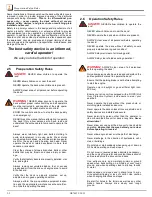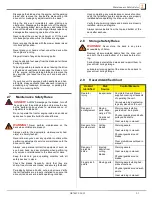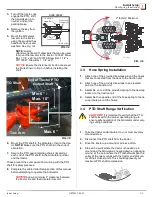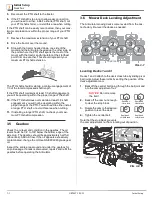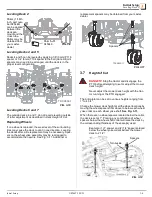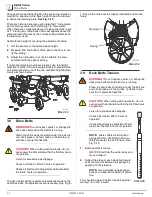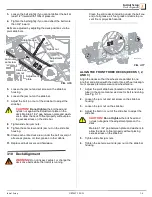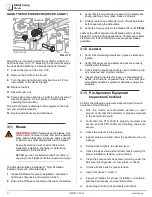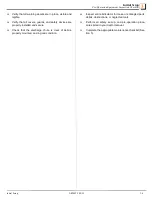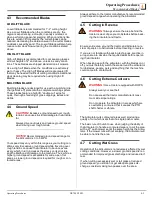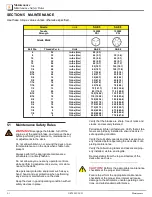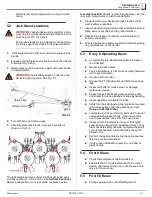
Operating Procedures
XR700 2/28/22
4-2
Operating Procedures
Recommended Blades
4
4.3 Recommended Blades
LOW-LIFT BLADE
Low-Lift Blade is recommended for 1”-2” cutting height.
Use a Low Lift Blade when the conditions are dry, the
region is experiencing a drought, in sandy soil areas or
when performing seasonal scalping. When conditions like
this are evident, lift created by the cutter blades can be
reduced, decreasing the abrasion wear to the cutter blades
and deck caused by sand. The Low Lift Blade will also help
reduce cutter deck blowout during the conditions stated
above.
HIGH-LIFT BLADE
High-Lift Blade is recommended for cool season grasses
and cut heights of 2” and above, unless in sandy condi-
tions. These blades are shipped standard on all mowers.
Use a High Lift Blade when the conditions are extremely
wet or heavy. The High Lift Blades will create greater lift
that may be needed in difficult cutting conditions. Additional
deck cleaning may be required when using High Lift
Blades.
MULCHING BLADE
Mulching blades are designed for use with a mulching (dis-
charge block-off) plate or with a complete mulching system.
These blades feature a high lift, “double-cut” edge for
quick, thorough shredding of grass clippings, leaves and
debris.
4.4 Ground Speed
CAUTION!
Excessive ground speed over rough
terrain can cause structural damage to the Articula-
tor.
Always drive cautiously and reduce ground speed
when driving over rough terrain.
NOTICE
Recommended ground speed range for
the Articulator is 3 to 5 MPH.
Your speed may vary within this range as your cutting con-
ditions vary. Excessive ground speed while traveling over
rough terrain can cause the Articulator to bounce exces-
sively, which in turn increases the stress on its structure
and the likelihood of damage to the machine. Thus, while a
higher ground speed is acceptable for wide, open, flat
areas, a slower ground speed is required for rough or con-
toured areas.
Always adhere to the tractor manufacturer's recommended
ground speed range when operating the Articulator.
4.5 Cutting In Reverse
WARNING!
Always ensure the area behind the
tractor is clear of people or obstacles before back-
ing the Articulator and tractor.
Ensure entire area around the tractor and Articulator are
clear of people or obstructions before traveling in reverse.
If you are not familiar with backing techniques, practice in
an open area to develop the required skills before operat-
ing the Articulator.
When backing up with the articulator, with the blades on or
off, you must carefully watch the area around the articulator
for obstacles, people, pets and anything that the machine
could come into contact with.
4.6 Cutting Extreme Contours
WARNING!
Use a tractor equipped with ROPS.
Always wear your seat belt.
Do not exceed the tractor manufacturer's maxi-
mum side slope ratings.
Do not operate the Articulator in areas which are
so extremely contoured that it causes the PTO
shaft chatter or vibrate.
The Articulator cuts contoured areas well, producing a
quality of cut which rivals that of a single push mower.
The basic rule of thumb to use when judging the ability of
the Articulator to handle a contoured area is to cut the area
with a 21" push mower set at the same height as the Articu-
lator. If the mower cuts without scalping, the Articulator will
be able to handle the area.
4.7 Cutting Wet Grass
Operation of the Articulator is not adversely affected by wet
cutting conditions. However, a slower ground speed is rec-
ommended for improved grass discharge and reduced turf
tear.
If, when cutting excessively wet or tall grass at reduced
ground speed, you still do not get adequate grass dis-
charge, consider making two passes over the area.




